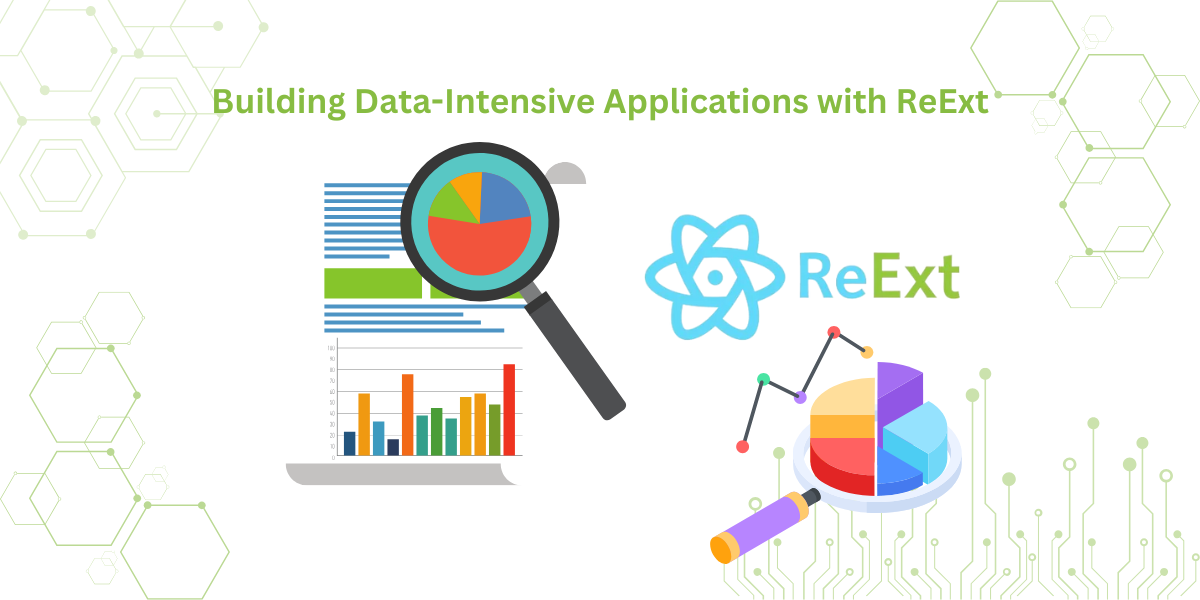Highlights of Virtual SenchaCon 2023

On April 12, 2023, we held the fourth Virtual SenchaCon, featuring a number of sessions on a wide array of topics, ranging from Sencha’s latest product Rapid Ext JS to Responsive Examples with Ext JS Applications.
A lot of things were discussed at these conferences, but one of the most standout sessions at the conference was conducted by Marc Gusmano, Sales Engineer of Sencha. Marc gave an in-depth presentation on Sencha’s latest product Rapid Ext JS and provided attendees with a comprehensive understanding of its features and benefits.
The conference kicked off with an inspiring keynote from Stephen Strake, General Manager of Sencha, where he shared insights about the company’s vision for the future. It was an exciting event that brought together developers, engineers, and enthusiasts from all over the world, and provided a unique opportunity to learn about the latest developments in the Sencha ecosystem.
Let’s see what insights Stephen shared with the attendees.
Keynote Highlights
Stephen Strake, General Manager of Sencha, along with Sarina Dupont, led the first session of SenchaCon 2023. In this session, Stephen shared the keynote and themes of the SenchaCon. Then, Sarina, Director, Product Management, Developer Tools, Idera described the future road map and introduced us to the latest product of Sencha, which is Rapid Ext JS.
So let’s discuss the conference in more detail.
Sencha Ext JS Explained by Stephen
Stephen started the conference by describing his decision on why he accepted the job at Sencha. He mentions that Sencha offers unique, world-class product offerings in a growing JavaScript market, renewal rates are high, the team is passionate and customer-centric, and the company has a good group of MVPs.
Stephen provided information about Idera, the parent company of Sencha. Idera was founded in 2003 and has since acquired more than 25 companies to grow its portfolio of database, developer, and DevOps tools. Idera has received private equity funding from various sources and has 12 global offices, 650+ employees, 50,000 global customers, and over 1 million users.
Stephen highlighted the advantages of using Sencha’s Ext JS framework for web application development. He explains that the Sencha framework is fully integrated, tested, and expandable, and provides support for modern and legacy browsers. He notes that using an open-source solution can pose risks due to vulnerabilities, legal requirements, monitoring and managing licenses, and the cost of ongoing maintenance. He also highlights the time and cost-saving benefits of using Sencha’s Ext JS, including saving 50% on front-end development, 75% on cross-browser and cross-platform development, and 75% on annual application maintenance.
Later Stephen gave an overview of the evolution of JavaScript tooling. He emphasized that the Ext JS grid component is the number-one focus of Sencha. Sencha is doubling its efforts on the Ext JS data grid component to make it better. According to Stephen, the Ext JS UI library contains all the tools that users need to build an enterprise-level application. Considering the fact that app security has become a major concern among developers, Ext JS provides all the components built in-house, reducing the scope for dependencies and vulnerabilities and thus making it a safer solution for app development.
And thus, Stephen passed the baton to Sarina, who further described the future road map of Sencha.
Sencha’s Product Road Map
Sarina, Director of Product Management, Developer Tools shared the safe-harbor statement with the audience, which states that the plans and road maps she was sharing represent Sencha’s intentions as of this date, but their development plans and priorities are subject to change. She also described the upcoming releases, the improved onboarding experience, and easy upgrades to Sencha products.
Sarina emphasizes a great onboarding experience for customers and makes upgrades as smooth as possible. Sencha plans to launch feature-rich quality products such as Ext JS 7.7, 7.8, and 7.9 with a focus on improving mobility and accessibility features while keeping the modern and classic toolkits on par. She also emphasizes easy upgrades for previous versions of their products, such as 4.x, 5.x, and 6.x, and provides a free upgrade advisor tool for customers.
Additionally, Sencha offers Rapid Ext JS Beta, a Visual Studio Code (VSC) extension, which is a powerful low-code editor that speeds up development with Ext JS. The company plans to release Rapid Ext JS 1.1.0 publicly, which will focus on ease of use, stability, and quality improvements. The new features will include more templates for getting started with new applications, an Undo/Redo feature for design view, improvements to Sencha Toolbox Feature, component hierarchy view improvements, documentation, and getting started guides.
The upcoming releases of Ext JS 7.7, 7.8, and 7.9 are also highlighted, with 7.7 focusing on addressing top customer requests for Classic and Modern Toolkit, improving grid and other major components, and open tooling. Sencha plans to include new features and quality improvements in 7.8, such as new themes for the modern toolkit and Ext JS Modern to Ext JS Classic parity features.
Now, let’s move on to the Marc Gusmano session, in which he discussed Sencha’s star product Rapid Ext JS [Beta].
A Brief on Rapid Ext JS
Marc Gusmano, the Sales Engineer of Sencha, advanced the conference by showing a glimpse of the latest product from Sencha aimed at reducing coding efforts and providing a low-code editor for the fast development of Ext JS apps.
The ongoing Rapid Ext JS beta phase is targeted at making the VS Code extension more intuitive and user-friendly. The product is built with extensibility in mind, and almost every part of VS Code is customized and enhanced through the Extension.
Rapid Ext JS is intended to make it easier for new users by supporting the drag and drop of components and updating configurations in real time.
Rapid Ext JS Plans For 2023
- Generating a dynamic view of any selected component file
- Drag and Drop Components
- Editing of Configs
- Creating a View with a context menu in any folder
- No metadata boundary – Edit the project in any IDE
- Download SDK mechanism
Standout Sessions from SenchaCon 2023!
Some of the sessions at the con were solely dedicated to the development talks and are a must-watch for developers. These sessions centered on Customized Test Automation of Ext JS applications by Yogeswaran Balakumaravel, Sencha Ext JS Formulas by Torsten Dinkheller, and Sencha Ext JS: Inspect and Debug by Max Rahder. In addition to these, all the other sessions are also worth watching.
Top Questions Answered During SenchaCon 2023
One of the most important parts of each session was the Q&A session at the end. And here are some of the most important questions that were addressed efficiently by the speakers.
Q. What is the difference between Sencha Architect and Rapid Ext JS VS Code Extension? Are they both available on the market?
If we compare Sencha Architect with the Rapid Ext JS VS Code extension, we see that they target different personas. Rapid Ext JS is a low-code editor, better suited for beginners and intermediates.
Sencha Architect is a robust visual application builder tool designed to simplify the process of developing Ext JS applications. It allows developers to create a complete application by visually dragging and dropping components and then generating the underlying code. Sencha Architect has been available in the market for a while now and has been used extensively by developers to speed up their development process.
On the other hand, Rapid Ext JS is a new low-code Visual Studio Code Extension currently in beta. It aims to simplify the development of Ext JS applications even further by providing built-in templates and a code generator. The exciting part is that developers can import existing projects into the extension and start working on them. While Rapid Ext JS is still in beta, it has already gained popularity among developers who are eager to try out new tools that can help speed up their development process.
It is important to note that Rapid Ext JS is still in beta, and the GA release is not yet done. However, developers can still try out the beta version and provide feedback to help improve the tool before its official release.
Q. What is the most challenging part of test automation?
The most challenging part of test automation is often the initial setup and configuration. This includes identifying the right tools and frameworks, selecting the appropriate test cases, and creating a reliable and efficient test environment. Once the setup is complete, maintaining the automation tests can also be a challenge, as changes in the application or environment may require updates to the tests.
Q. Do I need a license for Ext JS for my test automation project?
Yes, a license for Ext JS is required if you want to use it for your test automation project. Ext JS is a commercial JavaScript framework that is designed for building web applications, and it requires a valid license for use in production. However, if you are using Ext JS only for testing purposes, you can use a free trial license specifically for testing. It’s best to check with the Sencha sales team for more information on licensing options for test automation.
Q. Can we use Sencha Tools like Sencha Stencil or Architect to design the same as those are also low to no code editors? At least I guess Rapid ExtJS helps
Yes, you can definitely use Sencha Tools such as Sencha Stencil or Architect to design the application, as these are low code editors that can help to streamline the development process. In addition, Rapid Ext JS [Beta] can also be used as a helpful tool to facilitate the development process.
Q. How do you choose between Ext JS modern and classic toolkits for your web app?
Choosing between Ext JS modern and classic toolkits for your web app depends on your specific requirements and preferences.
Here are some factors to consider:
1. User interface: Modern toolkit is designed for creating modern and responsive user interfaces with material design while the classic toolkit is based on the traditional desktop-style UI.
2. Device compatibility: Modern toolkit is designed to support touch screens and mobile devices while the classic toolkit is optimized for desktop use.
3. Development time: Modern toolkit comes with a large number of pre-built components and layouts, making it faster to develop apps while classic toolkit requires more time to create custom layouts.
4. Backward compatibility: Classic toolkit is designed to support older browsers and can work with older versions of Ext JS while the modern toolkit is optimized for modern browsers and may not work with older versions of Ext JS.
Key Takeaways
The Virtual SenchaCon 2023 was attended by 1,400+ developers globally. The aim of this conference was to provide them with information regarding Sencha’s upcoming updates and releases, product demos, plus information on Sencha’s most vital product, Rapid Ext JS.
Conclusion: See you next year!
Just like all the previous SenchaCons, the Virtual SenchaCon 2023 was also a great hit. All of Sencha’s top MVPs and developers were part of the sessions as well as the Q&As at the end of each session. Plus, developers from other companies with a wide variety of experiences also spoke at SenchaCon. Sencha hinted at the conference regarding possible talking points for the next conference, and they sound exciting.

User experience matters just as much as the services a company offers. To meet this…

The latest industry reports show that around 60% of web applications rely on data grids.…

In the current age where data is wealth, almost 2.5 quintillion bytes of data are…









